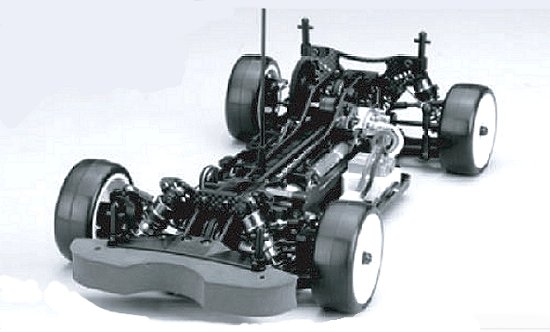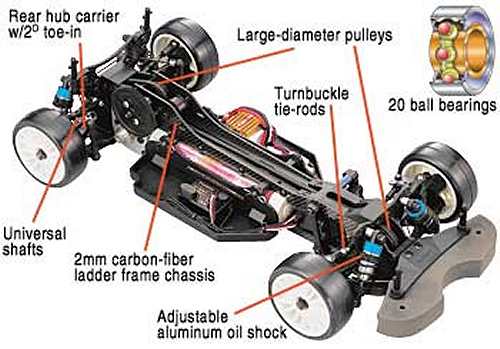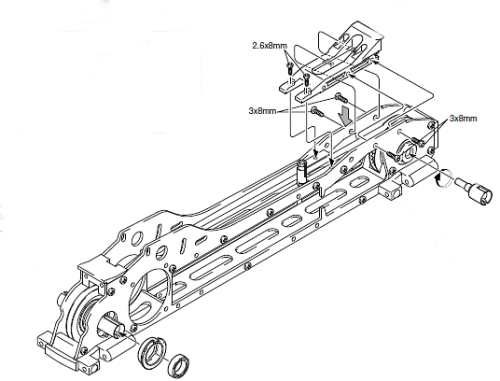

|
|
|


|
|
1/10 Scale Electric Touring Car:
Kyosho PureTen EP KX-One - 30101
|
Released by Kyosho in 2001, the 4WD EP PureTen KX-One (KX1) - # 30101 - is belt driven, with 2mm carbon fibre, vertical plate, ladder-frame chassis, ball differentials, coil spring over oil filled dampers, universal joint drive-shafts and came with a full set of ball bearings.
Check out our Kyosho Archive for other Touring Car models.

To race the Kyosho PureTen EP KX-One, you need to tweak and adjust all you can to give your car improved handling, stability and grip to ease around the curves and keep you on the track. One little setting change can transform your car into a world beater. Just follow our chart to attain the most favourable Set-up to suit your particular needs on any track.








|
|
|

★ Kyosho PureTen EP KX-One - 30101 Chassis ★

★ Kyosho PureTen EP KX-One - 30101 ★

|
Buying a Used Kyosho PureTen EP KX-One
|
|
Manufacturers and Brands Catalogued, Listed and Reviewed by RC-Scrapyard.
At present, the RC Model Manufacturers, Brands and Distributors covered by us are: ABC Hobby, Academy, Acme Racing, Agama Racing, Amewi, Ansmann Racing, ARRMA, Team Associated, Atomic RC, Axial, AYK, Bolink, BSD Racing, Capricorn, Carisma, Carson, Caster Racing, Cen, Corally, Custom Works, Durango, Duratrax, ECX - Electrix, Exceed RC, FG Modellsport, FS-Racing, FTX, Fujimi, Gmade, GS-Racing, Harm, HBX, Helion, Heng Long, Himoto Racing, Hirobo, Hitari, Hobao, Hong-Nor, Hot Bodies, HPI, HSP, Intech, Integy, Jamara, JQ Products, Kawada, Kyosho, Losi, LRP, Maisto, Mardave, Marui, Maverick, MCD Racing, Megatech, Mugen, New Bright, Nichimo, Nikko, Nkok, Ofna, Pro-Pulse, Protech, PTI, RC4WD, Redcat Racing, RJ-Speed, Robitronic, Schumacher, Seben, Serpent, Smartech, Sportwerks, Step-Up, Tamiya, Team-C Racing, Team Magic, Thunder Tiger, Tomy, Top Racing, Traxxas, Trinity, Tyco, Vaterra RC, Venom, VRX Racing, WLToys, X-Factory, Xmods, Xpress, Xray, XTM, Yankee RC, Yokomo, ZD Racing and Zipzaps. |
|
Hints, Tips and Information
Battery Connectors
Over the years I have been racing radio controlled model cars of all descriptions, I have tried a number of different connectors for my batteries.
|
|
Hints, Tips and Information
Dampers
Dampers, Shock Absorbers, Shocks - call them what you will, they are one of the least understood, but most important tools you have for adjusting the handling characteristics of your RC model.
So how do Dampers work?
Basically what you have is a small amount of silicone oil contained in a sealed cylinder. Through the centre of that cylinder is a metal rod, and on the end of that rod, a piston with a number of small holes in it. Pulling, or pushing the rod in and out of the cylinder, your will notice a certain amount of resistance as the oil is forced through the holes in the piston. |
|
RC Models:
|
Radio & Motors: |
Other
Accessories: |